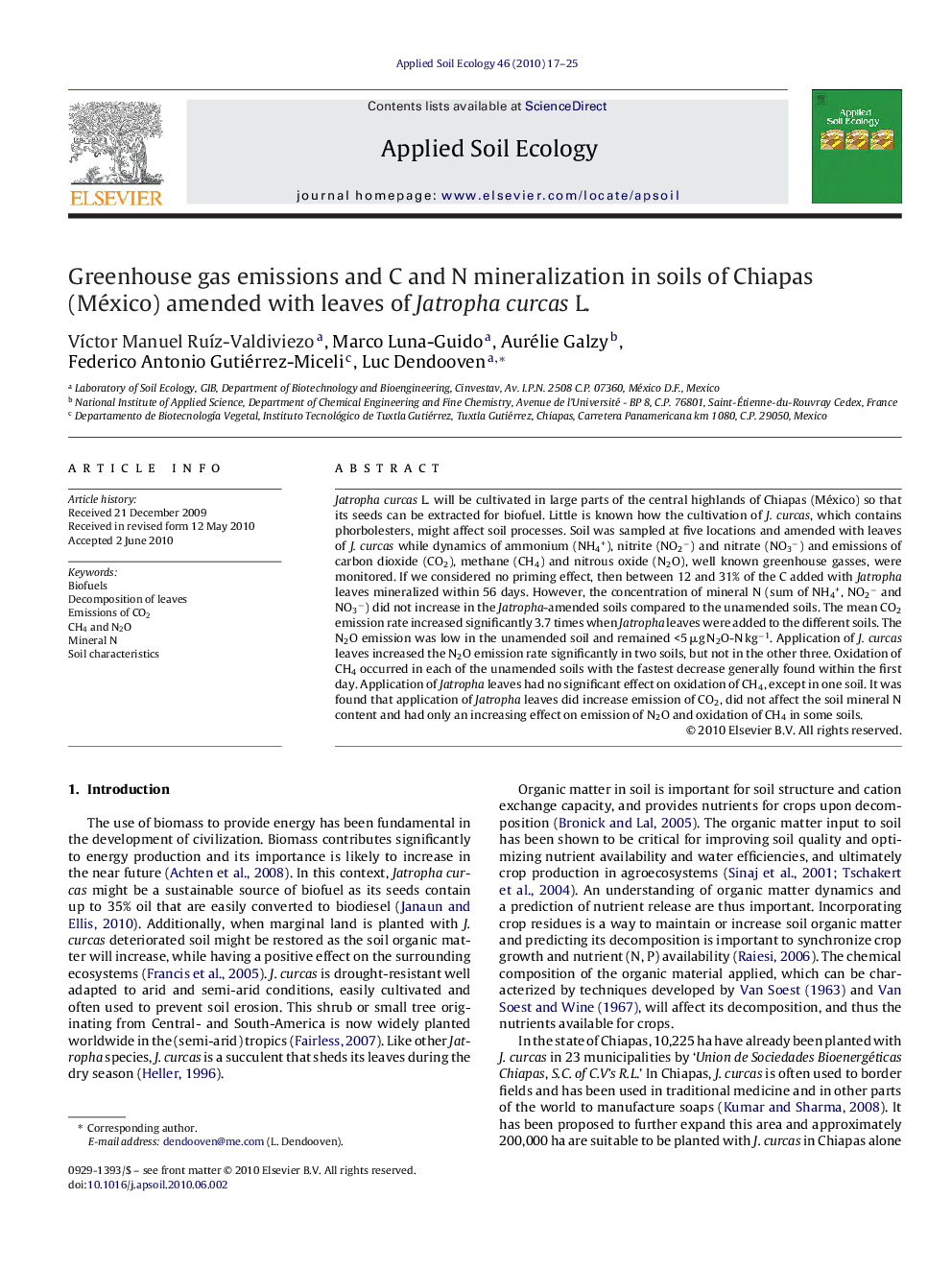| Article ID | Journal | Published Year | Pages | File Type |
|---|---|---|---|---|
| 4382763 | Applied Soil Ecology | 2010 | 9 Pages |
Jatropha curcas L. will be cultivated in large parts of the central highlands of Chiapas (México) so that its seeds can be extracted for biofuel. Little is known how the cultivation of J. curcas, which contains phorbolesters, might affect soil processes. Soil was sampled at five locations and amended with leaves of J. curcas while dynamics of ammonium (NH4+), nitrite (NO2−) and nitrate (NO3−) and emissions of carbon dioxide (CO2), methane (CH4) and nitrous oxide (N2O), well known greenhouse gasses, were monitored. If we considered no priming effect, then between 12 and 31% of the C added with Jatropha leaves mineralized within 56 days. However, the concentration of mineral N (sum of NH4+, NO2− and NO3−) did not increase in the Jatropha-amended soils compared to the unamended soils. The mean CO2 emission rate increased significantly 3.7 times when Jatropha leaves were added to the different soils. The N2O emission was low in the unamended soil and remained <5 μg N2O-N kg−1. Application of J. curcas leaves increased the N2O emission rate significantly in two soils, but not in the other three. Oxidation of CH4 occurred in each of the unamended soils with the fastest decrease generally found within the first day. Application of Jatropha leaves had no significant effect on oxidation of CH4, except in one soil. It was found that application of Jatropha leaves did increase emission of CO2, did not affect the soil mineral N content and had only an increasing effect on emission of N2O and oxidation of CH4 in some soils.
